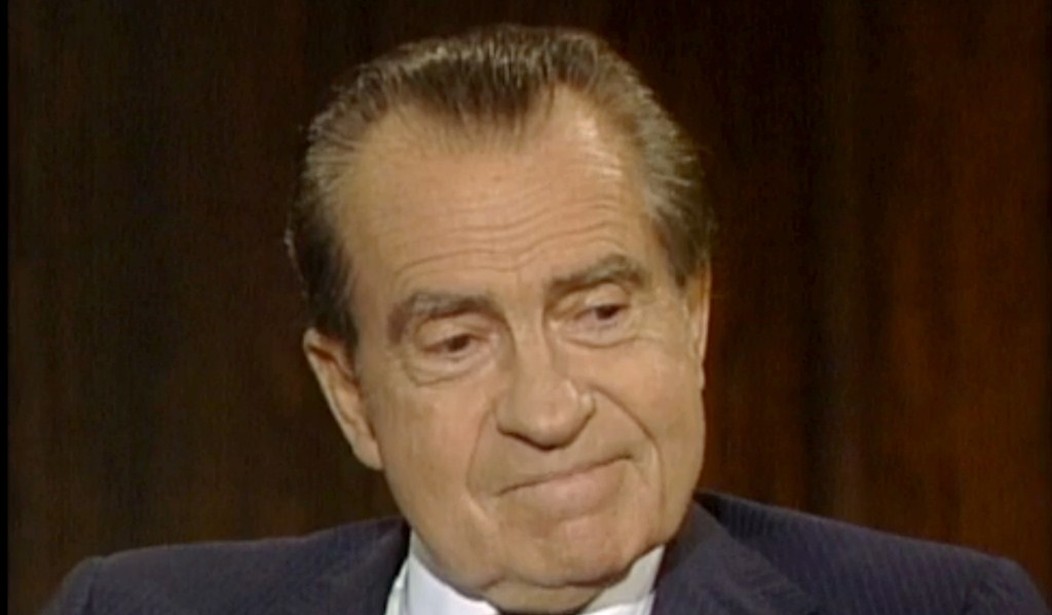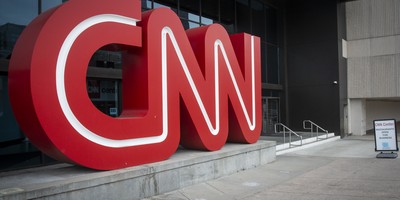Editor's note: this column is an excerpt from "Nixon's Secrets"
No American President had a more tortured relationship with television than Richard Nixon. As a Vice Presidential candidate Nixon salvaged his career with the televised “Checkers” speech to defend himself from charges of corruption. His poor appearance in the first 1960 debate with John Kennedy is credited with losing him that close election.
Key to his political comeback in 1968, Nixon found more innovative ways to utilize the medium of television and soften his image. It was twenty-eight-year-old Roger Ailes who transformed this image through the remarkable use of television.
Ailes knew television. On January 9, 1968, he met Nixon backstage. The candidate was scheduled for an on-air interview with Douglas.
“It’s a shame a man has to use gimmicks like this to get elected,” Nixon said, flippantly.
“Television is not a gimmick,” Ailes said. “Mr. Nixon, you need a media advisor.”
“What’s a media advisor?” Nixon asked.
“I am,” Ailes answered.
Roger Ailes recognized that instead of changing Nixon, it would be easier to control the medium. He knew if the campaign was putting out the product, every detail was under their direction. “Those stupid bastards on the set designing crew put turquoise curtains in the background,” Ailes said as they designed a set in Chicago prior to the fall campaign. “Nixon wouldn’t look right unless he was carrying a pocketbook.”
Ailes worked to erase Nixon’s image as a partisan slasher by making him look calmer, more mature, more balanced, and more measured. He made Nixon look like a statesman who was knowledgeable, firm, and experienced. Just as important, Ailes schooled Nixon on how to work with the camera to avoid looking shifty and, above all, to seem like he had the gravitas to be president.
Recommended
More importantly, Ailes created a Nixon that appeared spontaneous, as if he was risking all. This new, no-holds-barred Nixon was put on display in a variety of settings, and even spun into the counter-culture.
In the midst of his presidential campaign, Nixon agreed to help out a friend, NBC writer Paul Keyes, by providing a cameo for the show Keyes worked as head writer on - Rowan and Martin’s Laugh-In. Nixon had met Keyes on the set of Jack Paar's Tonight Show in 1963, where the writer was honing his talent. Nixon's appearance on Paar's program would not have the cultural effect of his Laugh-In cameo, but it also highlighted another side of the man. With full orchestral accompaniment, Nixon played a short piano concerto that he had written. The appearance no doubt gave Keyes the opinion that Nixon was not the uncultured clod depicted by the media.
The Laugh-In cameo was brief, only five seconds and four words long, but its influence greatly outgrew its size.Laugh-In producer George Schlatter would later apologize for what he believed was his role in helping to elect President Nixon.
While most readers today will be unfamiliar with Laugh-In, during its five-year run from 1968 to 1973 it sought to represent the alternative culture of the late sixties for a mass audience. That is, it appealed to young members of the hippie movement for its appearance and somewhat manic style, and was also enjoyed by the individuals who made up what Nixon would popularize as “the silent majority” – Laugh-In felt new enough to woo America’s youth, while being old enough in content to protect the sensibilities of an older generation of viewers. As a result of this duality it was tailor made for Nixon’s campaign in 1960, in which the old anti-Communist who cut his bones in exposing Alger Hiss, mellowed his image to allow a wider range of votes to turn on and tune in.
In the years after his 1962 electoral defeat in the California Governors race, Paul Keyes had become a fixture in Nixonland. He was placed on the payroll intermittently in the campaign, largely used to write jokes for Nixon’s speeches, and generally make Dick Nixon appear more likeable. Laugh-In co-host Dan Rowan recalled that during the 1968 campaign, Keyes would receive calls from Nixon “four or five times a week," and it was this closeness which enabled him to talk Nixon into appearing on the show.
However, Nixon’s decision to participate in the show met with concern among many of his senior staff, to whom the idea of a potential President taking part in a cheap and somewhat vulgar gag (earlier in the bit one of the show’s female characters suffered a number of unfortunate accidents, including having her dress ripped off and her underwear soaked in water) appeared inappropriate. After some negotiation regarding what exactly Nixon would say on the show between Keyes, Schlatter, and the Nixon team the participation in the “sock-it-to-me” gag was decided upon. Schlatter recalls that Nixon required around “six takes” because in his early shots Nixon appeared angry or irritated.
Ultimately, the end result of the Laugh-In gag was worth it for the Nixon camp. The candidate comes off even today as, if not a natural comedian, an earnest and enthusiastic participant. Some have pointed out that the genius of Nixon’s performance lies not in the quality of Nixon’s acting, but rather in the unique manner in which he addressed the performance. If you watch the clips available online today of the entire gag, one is struck by the way in which the other actors speak the line not as a question (that is, they do not appear to be asking, “[are you going to] sock it to me?”), but rather as a statement, or declaration (i.e. “here we go again”). Nixon stood that on its head, and presented the line as a surprised question, exactly as one would expect any normal individual to do so when confronted with the potential to endure one of the show’s torments for those being “socked."
It is strange to consider, and perhaps objectively a little silly; however, this simple distinction is enough to help make Nixon appear more normal. After the appearance, and in realizing the potential effect the show had, apparently unintentionally, had on a close race, they reached out to the campaign of Vice-President Humphrey and offered to let him make a similar cameo. Humphrey’s camp passed on the opportunity, fearing that the show creators would manufacture a way of making the candidate look silly; in point of fact, Schlatter has claimed that all they wanted Humphrey to say was, “I’ll sock it to you, Dick!” In the end, Laugh-In was but one part of the effort to “re-invent” Nixon during the 1968 campaign, but it must be viewed as one of the most successful parts in which Nixon managed to find some common cause with the counter-cultural movement sweeping across Americas youth.
"He (Nixon) said the rest of his life that appearing on Laugh-In was what got him elected," recalled Schlatter. "And I believe that. And I've had to live with that." Today you can go to YouTube to see Nixon say “Sock it to me."

























Join the conversation as a VIP Member